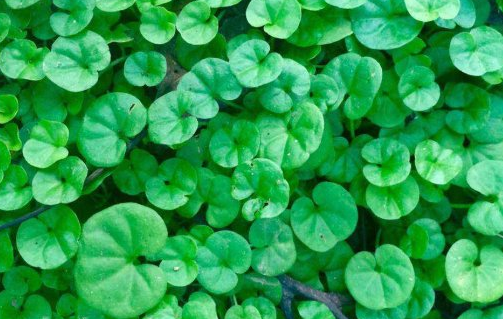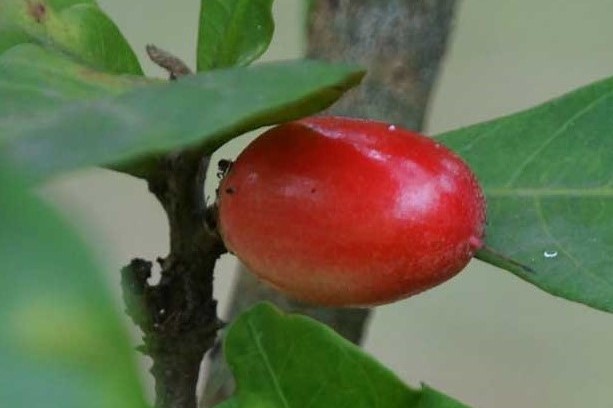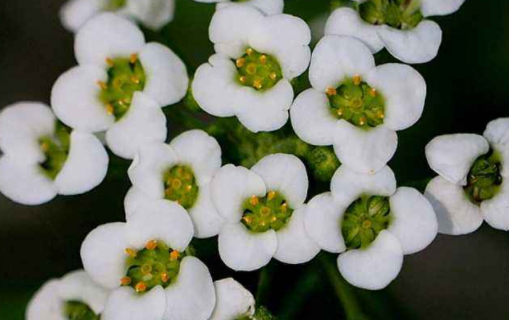Matters needing attention in the culture of Dichondra repens
Remove weeds
Dichondra repens in lawn greening, because it takes a period of time to fully cover, so there will be weeds, less weeds can be used to pull out manually, if more weeds can be used herbicide spray.

That's all for today. I hope you can try it boldly after you learn how to raise it, and then you will get a pot of lush Dichondra.
Culture methods and matters needing attention of Dichondra repens
Latin name Dichondra repens Forst.
It is also called small money grass, lotus bract grass, meat wonton grass, gold key, copper money grass, small horseshoe, jaundice grass.
Binomial Dichondra repens
The plant kingdom.
Phylum angiosperm
Dicotyledonous class
Subclass synpetalous flower
Order Tubularia
Family Convolvulaceae
Subfamily Convolvulinae
Family Xuan Hua tribe
Horseshoe metal
Dichondra repens
Distribution area tropical and subtropical regions of two hemispheres
Dichondra repens (Dichondra repens Forst.), alias small money grass, lotus bract grass, meat wonton grass, gold key, copper money grass, Dichondra repens, jaundice grass, is a spiral flower family, horseshoe metal plant. Distributed in the south of the Yangtze River in China (including Taiwan), widely distributed in Guizhou, Guangxi, Fujian, Sichuan, Zhejiang, Hunan and other places, growing in areas ranging from 1300 meters to 1980 meters above sea level, and growing on roadsides, hillside grasslands or ditches. Has been artificially introduced and cultivated. It is a common herb for the Miao people to treat hepatitis. The name of the Miao medicine is Wobi Credit slip. It is a perennial creeping herb, harvested from April to June. Taste bitter, pungent, slightly cold, the host lung meridian and stomach meridian, with heat-clearing and detoxification, diuresis, blood-activating effect, is blindly rich in resources of Miao folk medicine, has a good development and utilization value.
1. Morphological characteristics.
Small creeping perennial herbs, stems slender, gray pubescent, rooting at nodes. Leaves reniform to orbicular, 4-25 mm in diam., apex broadly rounded or emarginate, base broadly cordate, leaf surface puberulent, abaxially Adnate pubescent, entire; petiole long, petiole (1.5) 3-5 (6) cm long.
Flowers solitary leaf axils, petiole shorter than petiole, filiform; sepals Obovate-oblong to spatulate, obtuse, 2-3 mm long, abaxially and marginal hairy; Corolla campanulate, shorter to slightly longer than calyx, yellow, deeply 5-lobed, lobes oblong-lanceolate, glabrous; stamens 5, inserted in curved spaces between Corolla 2 lobes, filaments short, equal; ovary sparsely pilose, 2-loculed, with 4 ovules, style 2, stigma capitate.
Capsule subglobose, smaller, shorter than calyx, ca. 1.5 mm in diam., membranous. Seeds 1-2, yellow to brown, glabrous.
The culture method of Dichondra repens and the matters needing attention in the process of culture
Dichondra is a rotational flower family, horseshoe metal plant, is blindly rich in resources of Miao folk medicine. So, do you want to know what are the planting techniques of Dichondra repens? Do you want to raise Dichondra? Today, the editor, next we will come to know the plant Dichondra.
Culture methods of Dichondra repens
Light and temperature
The growth of Dichondra should maintain enough light and be exposed to more sunlight every day so that it can grow exuberant and green. Dichondra repens has both light-loving and shade-resistant growth habits. It can grow in semi-humid places and does not require high temperature, but it will frostbite when the temperature drops from-6 ℃ to-7 ℃.
Water and fertilizer management
Dichondra repens needs regular irrigation and appropriate fertilization during its growth. The seedlings of Dichondra repens were irrigated once or twice a week after being unearthed, and the times of irrigation should be increased in dry season. After maturity, watering should be controlled in early spring and early winter, and the watering times should be determined according to the soil quality in the Spring Festival growing season.
Dichondra likes nitrogen fertilizer, usually combined with rain and watering, should apply appropriate amount of nitrogen fertilizer, after fertilization to pour a lot of water to reduce the degree of leaf burns. Or fertilize first, then sweep the fertilizer under the leaves, and then combine with watering. At the same time, the high temperature in summer can not be fertilized.
Soil
Dichondra is not very strict on the soil, as long as the drainage conditions are moderate, it can be planted on sandy soil and clay.
Grow in fields or mountains with fertile soil.
Matters needing attention in the culture of Dichondra repens
Remove weeds
Dichondra repens in lawn greening, because it takes a period of time to fully cover, so there will be weeds, less weeds can be used to pull out manually, if more weeds can be used herbicide spray.
Propagation methods of Dichondra repens
Dichondra repens is commonly used to reproduce by sowing and dividing plants.
Pest control of Dichondra repens
Dichondra repens lawn has strong disease resistance, only white silk disease and a small amount of leaf spot mildew occur. Rust will also occur.
Sclerotinia disease.
The larval grubs of beetles, armyworm of night moths and larvae of small land tiger are the main pests of Dichondra lawn. There are other pests such as snails, meadow borer, and pointed locusts.
This is what I know about herbaceous plants today. I hope it will be helpful for you to read this article. If you want to know more about herbaceous flowers, please continue to pay attention to our succulent flower beds. We will provide you with more relevant content as soon as possible!
- Prev

The production of mysterious fruit bonsai
1. The mysterious fruit of matrix selection requires a substrate with fertile and loose, good air permeability and good drainage, which is suitable to choose mountain mud or garden soil, and then add about 1 peat, compost, sawdust and 5% retted cake fertilizer to mix evenly. 2. The potting time of the mystery fruit should be between April and August.
- Next

How to raise fragrant snowballs
Temperature fragrant snowball likes to grow in a cold environment, it does not like hot weather, the temperature requirements in winter is not very strict, as long as there is no frost, the plant can survive the winter safely. The temperature is too high in summer, so we should pay attention to cooling it, if the temperature is above 30 degrees.
Related
- Fuxing push coffee new agricultural production and marketing class: lack of small-scale processing plants
- Jujube rice field leisure farm deep ploughing Yilan for five years to create a space for organic food and play
- Nongyu Farm-A trial of organic papaya for brave women with advanced technology
- Four points for attention in the prevention and control of diseases and insect pests of edible fungi
- How to add nutrient solution to Edible Fungi
- Is there any good way to control edible fungus mites?
- Open Inoculation Technology of Edible Fungi
- Is there any clever way to use fertilizer for edible fungus in winter?
- What agents are used to kill the pathogens of edible fungi in the mushroom shed?
- Rapid drying of Edible Fungi

